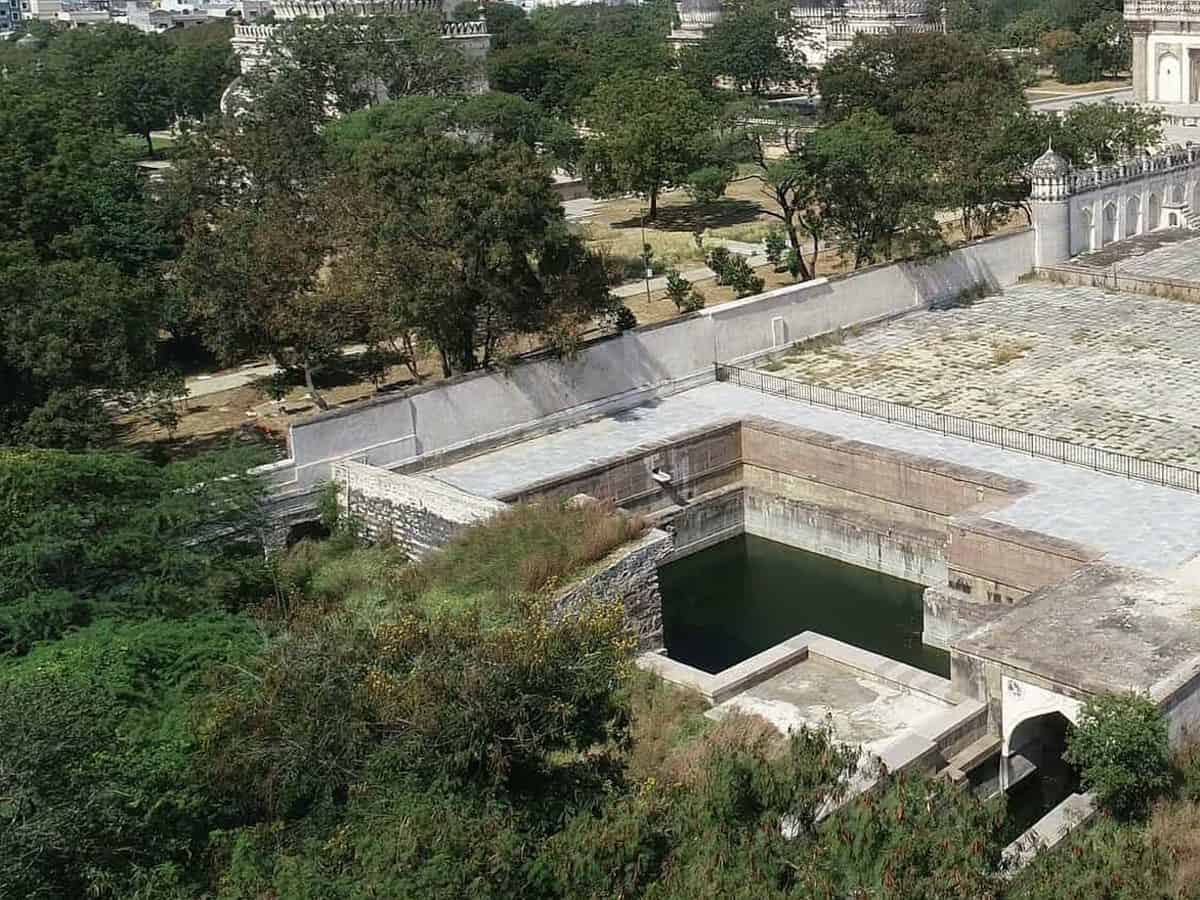
Hyderabad: After close to a decade of rigorous hard work on restoration by the Aga Khan Trust for Culture and the state government, the restored stepwells in the historic Qutb Shah tombs of Hyderabad bagged the ‘Award of Distinction’ at the UNESCO Asia-Pacific Awards for Cultural Heritage Conservation. The awards were announced on November 26 at Bangkok.
The ‘Award of Distinction’ is a big win for the city and the Qutb Shahi tombs complex, where royals (and others) of Hyderabad’s founding Golconda dynasty (1518-1687) are buried. Restoration work at the Qutb Shahi tombs has been going on since 2013, and the necropolis also has seven stepwells. The UNESCO award is not surprising however, given the fact that the AKTC also managed to restore the partially collapsed Badi Baoli in the Qutb Shahi tombs.
Earlier in September, Telangana Industries and IT minister KT Rama Rao (KTR) had inaugurated the stepwells (baolis) at the Qutb Shahi tombs. “We shall surely apply for the UNESCO world heritage tag in the future,” the minister said while addressing the media. He went on to say that the AKTC did a “fine job” of maintaining these heritage sites at the Qutb Shahi tombs and added that is important for cities to keep their culture and heritage intact.
The UNESCO programme which gave the award has been recognising the efforts of private individuals and organisations in restoring structures and buildings that are of heritage value. “The restoration of the stepwells of Golconda has realized an ambitious, long-term vision for renewing the extensive complex of architectural and social spaces within the sixteenth-century Qutb Shahi necropolis,” said UNESCO’s citation on the award.
“The conservation works undertake by the Aga Khan Trust for Culture and the Department of Heritage of the Government of Telangana have been supported by the US Ambassadors Fund for Cultural Preservation and the Tata Trusts. The award demonstrates the validity of the public-private partnership for conservation of heritage being promoted by the Government of Telangana,” said Ratish Nanda, AKTC’s CEO.

New tourist attraction
The site is becoming a major attraction for tourists thanks to its restoration by the AKTC. The Qutb Shahi tombs has close to 100 structures, which include tombs, a Hamam (Turkish bath), mosques, gardens and unmarked graves, apart from stepwells. The necropolis was historically connected to the Golconda fort, which was a walled-city before Hyderabad was founded in 1591. However, today, due to local encroachments on the site, the pathway connecting the fort and the tombs complex has been built upon.
The Qutb Shahi tombs are the royal necropolis of the Qutb Shahi or Golconda dynasty (1518-1687), which once ruled from the Golconda fort, and later founded Hyderabad in 1591. The tombs complex comprises nearly 100 structures, including tombs, gardens, pavilions, and mosques. The site is currently being restored by the Aga Khan Trust for Culture (AKTC) in association with the Telangana Department of Heritage.
History of Hyderabad Golconda fort and Charminar
The Golconda Fort’s origins are traced back to the 14th century when the Rajah of Warangal Deo Rai (under the Kakatiya Kingdom which ruled from Warangal) built a mud fort. It was later taken over by the Bahmani Empire between 1358 and 1375. It was later developed into a full-fledged citadel by Sultan Quli who founded the Qutb Shahi kingdom in 1518 following the death of last sovereign Bahamani emperor Mahmud Shah Bahamani.
Earlier, Sultan Quli was a commander and later governor of Tilang (Telangana), under the Bahamani Empire (1347-1518), when its second capital was at Bidar. Sultan Quli, who was originally from Hamadan, rose to the level of Governor under the Bahamani empire. At this point of time he was given the fort, which he began developing into a walled-city. It eventually came to be called Golconda Fort (name derived from Telugu Golla-conda, or shepherds hill).
Charminar
The Charminar is Hyderabad’s foundational monument. Built in 1591, it was constructed to mark the city’s establishment by Mohammed Quli Qutb Shah, the fourth ruler of the Qutb Shahi (or Golconda) dynasty. Prior to the Charminar being built, the Golconda fort was a walled city, from where the first three kings Qutb Shahi kings had ruled.

After Hyderabad was founded, the fort was eventually turned into a military barrack. However, the fort was also the place from where the final Qutb Shahi-Mughal war was also fought in 1687, after Aurangzeb attacked the Golconda kingdom. He succeeded after an eight month long battle, after which the entire Qutb Shahi area was brought under Mughal territory.
